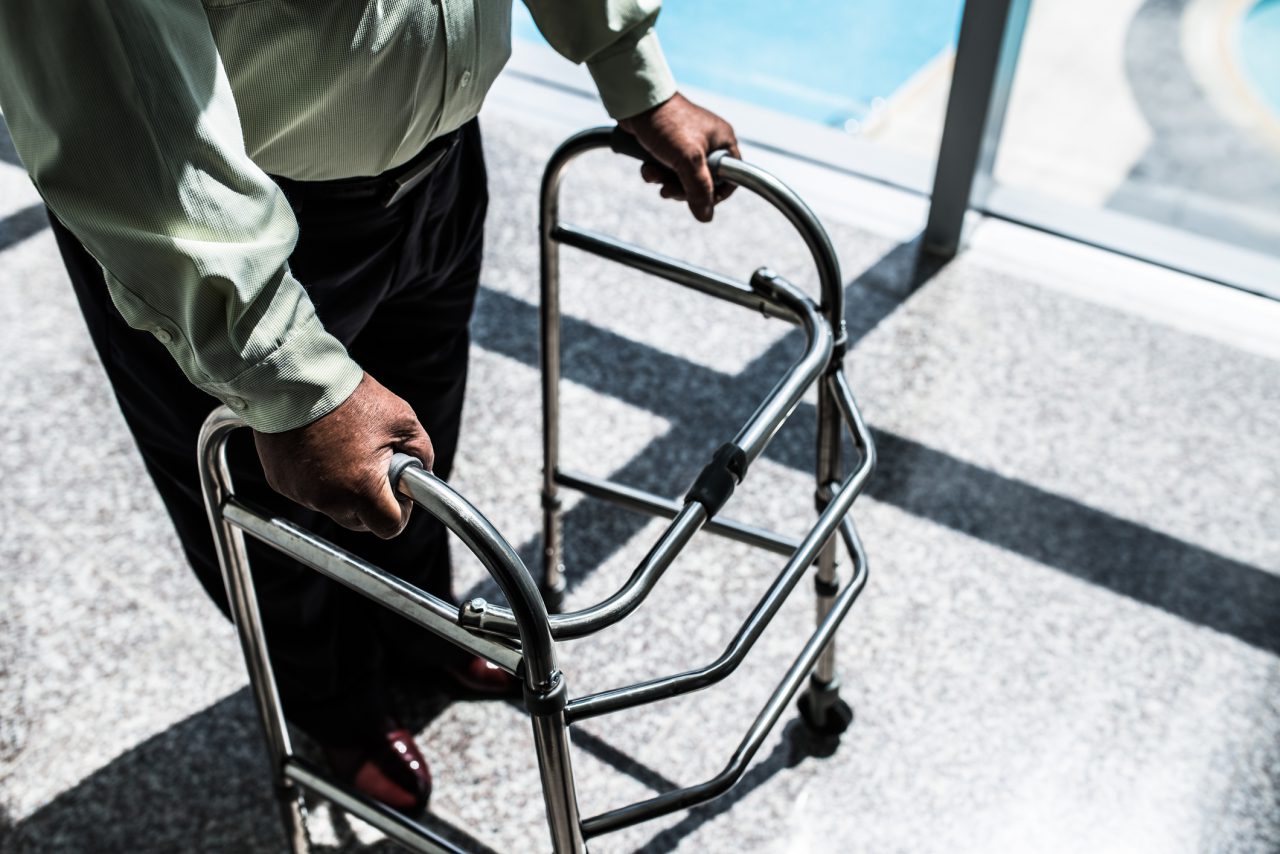My wife, Joanne, son Mark, and I embarked on a new adventure in the summer of 1979 when we moved to Oklahoma. I had accepted a position at the Energy Research Center. Fortunately, the move proved to be a good one because we were made to feel like members of the family at work and at home.
A few months after we arrived I noticed a slight tingling in my legs. There had been prior occasions when I drove myself to the point that my legs felt somewhat different, so I ignored it for several weeks. I also tried to ignore the fact that it became difficult to climb stairs, so much so that I had to grab the railing to help me.
Family members and fellow workers became increasingly more vocal in their pleas for me to contact a neurologist. I think the day I needed to use both hands to open a black paper clip made me decide to follow their advice.
I have rather vague memories of what tests the doctor’s assistants performed, but I do remember having wires pasted to what seemed to be every inch of my body. Several of these circuits did not deliver the signal from point A to point B. When the doctor analyzed the test results, his reaction was an indication of how serious a problem I had. He instructed Joanne to take me to the hospital in Tulsa and take along toiletries and clothing for me because I was not going back home with her.
I was diagnosed with Guillain-Barré syndrome. I was certain Joanne sensed that I had knowledge of the seriousness of this condition. I knew I faced a major challenge because I had recently read an article in Reader's Digest titled “Bed Number 10.” Based on a nonfiction book that had been condensed for the magazine, the article described the effects on the life of a Mary Z. Schumaker, a Houston housewife who “endured a virtual living death” when she contracted this disease. For the first several weeks she had no control of any part of her body except for her eyelids.
The time had arrived for me to put my preteen determination to perform at a level well above the norm. When I was 10 years old I was the bell operator for the mechanic in my dad’s home insulation business. That may sound like a so-what kind of job, but it required me to climb 20- to 30-foot ladders to the rooftop, where I fed bell cord and insulation hose into the opening cut for the installer inside who blew the insulation material. I needed this level of resolve to prove to the doctor that I was determined to succeed where others had failed.
Whenever he instructed me to perform some simple task like sit on a low stool, he would comment that someday I might be able l to stand up without help. My mind substituted the word “will” for his “might.” I tried to overachieve in all the challenges I received in therapy. Finally, I was released from the hospital.
My staff at work probably thought that I had exaggerated the seriousness of my illness because I appeared to be just as active as before my hospital stay. I drove the station wagon-load of buddies to the hunting fields, took Mark fishing on the lake aside of Will Rogers' homestead, and captained the center’s bowling team.
The Department of Energy closed all the Western centers in 1982, and we moved frequently, selecting cities that were within commuting distance of my new office. I located trails and fitness clubs nearby that I could use to maintain my fitness regimen. For one six-year period, I boarded the 5 a.m. Metro to Washington, D.C., checked into the fitness center, spent an hour on a treadmill at maximum incline, showered and got to my office by start of business.
Years passed. Joanne died in 1999. I retired at age 86 in 2012 but for a one-day-per-week 4 a.m. shift at the Body Zone, a health and fitness club. I was living alone in Bernville, Pa., a short distance from Blue Marsh, a flood control lake rimmed with a variety of paths. The casual walkers chose the flat ones, trail bikers liked the challenge of the rocky hill-and-dale type, and a few, me included, chose the mountain climber version on the opposite side of the lake. Nearly every day, weather permitting, I hit the trail for a three- or four-mile walk. The weather had to be nasty for me to switch to my indoor option at the Body Zone.
Early in 2013 while working my shift at Body Zone I collapsed and was taken to the ICU at the Reading hospital. I spent six days there before being transferred to the rehab unit. From that point forward it was a series of tests, injections and all that goes with someone brought in as I was. The multitude of tests identified the host of physical problems as follows: anemia, rheumatoid arthritis, low red cell count, infection of the blood and kidneys, Parkinson's disease, blocked artery, wounds on both legs and butt, and irregular heartbeat. Other than that, I was in great shape.
I received several transfusions for the low red cells followed by weekly antibiotics for blood and kidneys plus an operation on the colon. I visited specialists almost daily. They gave me about 25 pills a day starting as early as 5 a.m. and continuing until 9 p.m.
My mode of transportation became the wheel chair. For months, I was wheeled to therapy sessions at the rehab center. I learned how to perform all the basic tasks of balance, using a walker, climbing steps, operating many of the machines in the gym. I considered many of the tasks too basic and resisted the instructors for a long while until I accepted the fact their read on my motor skills was far more accurate than mine. Before I was discharged I apologized to the trainers for my attitude. My optimistic frame of mind had not been impaired, but it was time for me to set my goals at a slightly reduced level and then call upon my resolve to reach them.
My daughter and daughter-in-law moved me to Elmcroft, an assisted living center near Reiffton, Pa. John, supervisor of the therapy department, and his staff spent months further improving my balance, teaching me how to use a walker and showing me the proper way to use a cane.
From there I moved to the assisted living section of Phoebe Berks Village in Wernersville, Pa. I had noticed that Chris, the therapy supervisor, used methods and routines like those I had received at Elmcroft. When I mentioned this to Chris he laughed and said that John had been his supervisor earlier in his career.
Chris and his staff continued to intensify my routines. The training continued for nearly a year. I started with short trips to the end of the hall and back. Later I advanced to walks partway around a one-third mile track. As my balance improved I learned the proper way to use a cane. Chris also instructed me on the use of several machines in the gym that I continue to use. With each session, I started to feel the resurgence of my strength and improvement in balance to the point that I was closing in on my goal of moving to an apartment.
After this training, I began completing even longer trips around the track. Using my walker, I set a goal to complete one then two rounds without taking a break. After many months of daily trips, I was completing nine laps each morning before breakfast in roughly 90 minutes.
My neurologist suggested that I should cut back to two miles to prevent potential stress of the additional mile and stay active rather than lounge around during the day. I assured him that I would find some activity to fill the time saved. The therapy continued at a somewhat lesser intensity during my stay in assisted living, and my condition improved to the extent that I was deemed healthy enough to move to an apartment in the residential living section.
There is no cure for Parkinson’s disease, but it is not deadly. In my case, continuing to remain active will result in slowing the debilitating effects. So, I continue with my daily two-mile morning walk, attend balance classes both on ground and in the pool. I refrain from extended periods of sitting of any form. From the first day of my transfer from ICU to the hospital, I was determined to regain my self-sufficiency and return to the real world.









